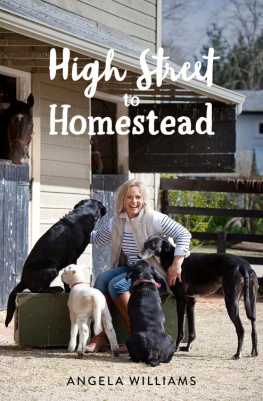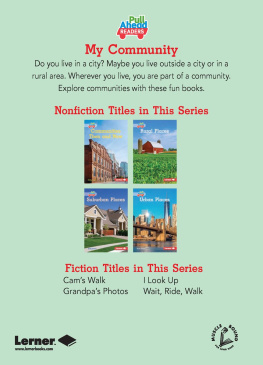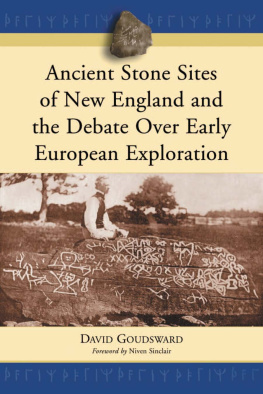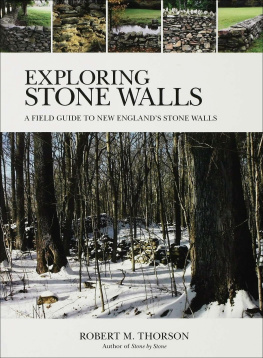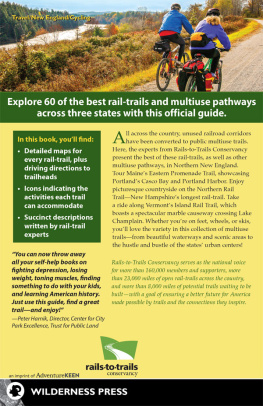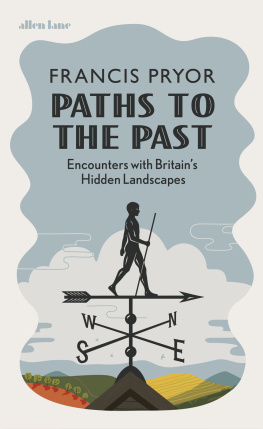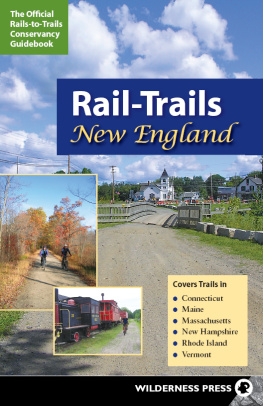Table of Contents
Page List
Guide


READING RURAL LANDSCAPES
A FIELD GUIDE TO NEW ENGLANDS PAST
Robert M. Sanford
With illustrations by
Michael Shaughnessey
With foreword by
Mark Lapping

Tilbury House Publishers
Thomaston, Maine
On the cover: An in-stream ice pond that was used in the mid- to late 19th century, outside of XXX, Maine. Photo by XXXX.
Tilbury House Publishers
12 Starr Street
Thomaston, Maine 04861
800-582-1899
www.tilburyhouse.com
Text copyright 2015 Robert M. Sanford
Illustrations copyright 2015 Michael Shaughnessey
Photographs copyright 2015 Nathan D. Hamilton, Gary Salmon, Robert M.
Sanford, Katie Ann Shapiro
Foreword copyright 2015 Mark Lapping
ISBN 978-0-88448-366-3
All rights reserved. No part of this publication may be reproduced or transmitted in any form or by any means, electronic or mechanical, including photocopying, recording, or any information storage or retrieval system, without permission in writing from the publisher, except by a reviewer, who may quote brief passages in a review.
Library of Congress Cataloging-in-Publication Data
Sanford, Robert M.
Reading rural landscapes : a field guide to New Englands past / Robert M. Sanford ; with illustrations by Michael Shaughnessey and a foreword by Mark Lapping.
pages cm
Includes bibliographical references and index.
ISBN 978-0-88448-366-3 (alk. paper)
1. Historic rural landscapesNew England. 2. Land use, RuralNew England. 3. Historic agricultural landscapesNew England. 4. AgricultureNew England. I. Title.
HD266.N36S26 2015
643.120974dc23
2015007289
Printed in the United States
15 16 17 18 19 MAP 10 9 8 7 6 5 4 3 2 1
To the memory of Richard Selden Sanford, 19262013
Contents
Acknowledgments
The mistakes and quirks of this publication are mine alone. This is despite the advice, assistance, and support of many people. In particular, I would like to acknowledge and thank Robin A. Sanford, my wife, librarian, and friend; my dad, Richard S. Sanford, who first inspired me with walks in the woods behind our dairy farm with my sisters and brothers (Dave, Suzanna, Liza, Jennifer, and Andy), all of whom tolerated and even liked talking about historic landscapes with me; and my children, Corey, Daniel, and Morgan. Tilbury House Publishers brought this book to life; I am grateful to them, especially Jennifer Bunting, Jon Eaton, and Fran Hodgkins.
In alphabetical order, my appreciation also goes to Virginia Barlow; Edward L. Bell, Senior Archaeologist, Massachusetts Historical Commissionthanks for the review comments; Dr. Libby Bischofthanks for your helpful suggestions; Nikkilee (Lee) Carleton, who read and commented on an early draft; Dr. Mike Cline; Dr. Ann Dean; Beth DellaValle; Dr. Phyllis Deutsch; Dr. Kevin Doran, Maine Forest Service educator; archaeologist Dr. Kenny Feder; James L. Garvin, New Hampshire State Architectural Historian; Roberta Gray, University of New England reference librarian; Dr. Nathan D. Hamilton, archaeologist and colleague; Kerry Hardy, with whom I had many talks about landscape history in graduate school; Harry Hoyt, retired surveyor with hundreds of tales; Don Huffer and Nina Huffer, Vermont consulting foresters; Rosemary Hunter; Dr. Bob Kuech; Dr. Jane Kuenz; Dave Lacy; Dr. Mark Lapping, inspiring planner, agricultural historian, and colleague; Katherine (Kate) McBrien, Maine Historical Society; Paul F. Miller, with whom I roamed the woods as a child; Christi Mitchell, Maine architectural historian; Tom Mulrey, artist; Dr. Tom Neumann, my former archaeology consulting partner and fellow reader of historic landscapes; Whitney Parrish; Giovanna Peebles, former Vermont State Archaeologist, source of particularly valuable criticism; Will Plumley; Patricia (Pat) Potter, University of Southern Maine reference librarian; Gary Salmon, Vermont forester; Katie Ann Shapiro, USM environmental science student and talented photographer; Dr. Travis Wagner, Christina Walker; Tom Wessels, ecologist and author; and Dan Yates, my son-in-law and fellow appreciator of family history.
Finally, Sebago Brew Pub and its employeessources of inspiration in more ways than one (including its Gorham restaurant being an adaptive reuse of the old railroad station)deserve my thanks and acknowledgment for their support.
Foreword
I grew up in the Northeast and most especially in New England. Over years of roaming its woods I came to know the birch, beech, maples, pines, firs, and other tree species that came to define much of the northern forest. After time I could identify barks, leaves, nuts, and seeds with some confidence. Some years later I moved to the edge of the Ozarks to teach forestry and land use planning. I needed a field guide to the regions trees to know with some degree of accuracy how to identify oaks, hickory, walnut, dogwoods, redbuds, and others. I am also a birder and I have used Petersons and several Audubon Society field guides to help me to identify what I was seeing and hearing in my forays into the woods. Field guides are teaching aids and they help us to understand in more specific ways what we are sensing and experiencing. Rob Sanfords book, greatly enhanced by photographs and Michael Shaughnesseys drawings, is a field guide to the landscape of Americas first region, New England, and more specifically the northern portion of the region. Unlike most field guides, however, Robs work tells us not only about what is but also about what was. In a sense, then, Reading Rural Landscapes is something unique in that it is a guide to what we are seeing but it is also a retrospective field guide that helps us to appreciate the forces that shaped the region, its people, and the landscapes which, in their turn, helped to define the modes and manners of living in northern New England. What might initially appear natural in the landscape has, in fact, been a shaped and created set of places and sites. When I coined the phrase working landscapes now over three decades ago, I meant what Rob has so well elaborated and explained. He has, in a sense, put the meat on the bones and in doing so I and all those who will use this book will profit from and deeply appreciate. This is a book that will bring insight and clarity, and not a little pleasure.
Mark B. Lapping, Distinguished Professor
Edmund S. Muskie School of Public Service
University of Southern Maine
Preface
This book is for anyone whos curious about the remnants and features of the bygone New England countryside, particularly those places where the houses, barns, and outbuildings are gone and only ruins remain. It is for history-minded people who drive along rural roads, hike through forest and field, or enjoy the views from their back fences. The geographic focus is northern New EnglandVermont, Maine, New Hampshire, and northern Massachusettsand the historical focus is on how the rural landscape reflects the past several hundred years of people making a living on the land. What clues to their agricultural and industrial activities did they leave behind? And how can we explore and experience the common (or vernacular) ways in which the landscape we see today was shaped by their endeavors?
My goal is not to replace the many fine books and maps that can guide you to and through specific places, nor have I tried to create an exhaustive inventory of historic rural features. Rather, I hope to share with you the language of the land so that you can interpret rural landscapes much as an archaeologist or environmental historian might. The descriptions in this book are short, intended to spark your interest and point the way to more in-depth references. I invite you to look closely at the landscapes that unfurl before your eyes in New England, and to find the clues to the past that are hidden within them.




